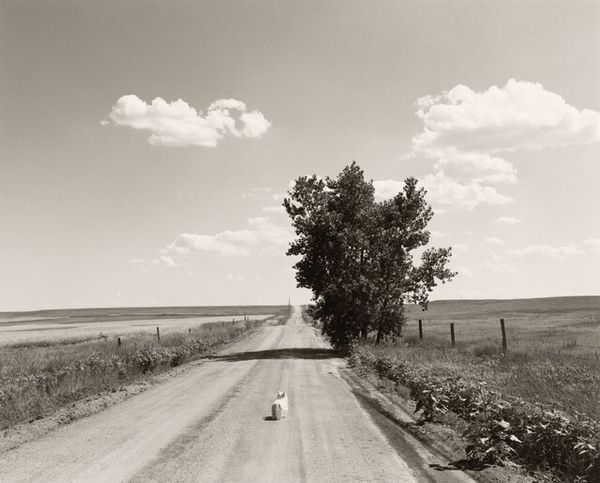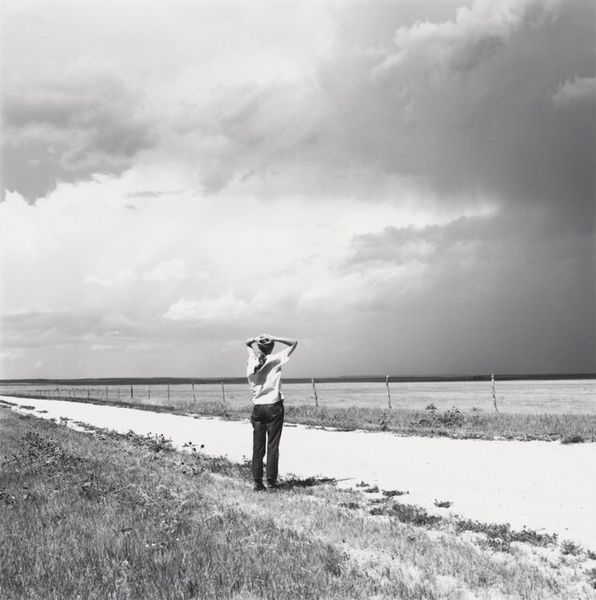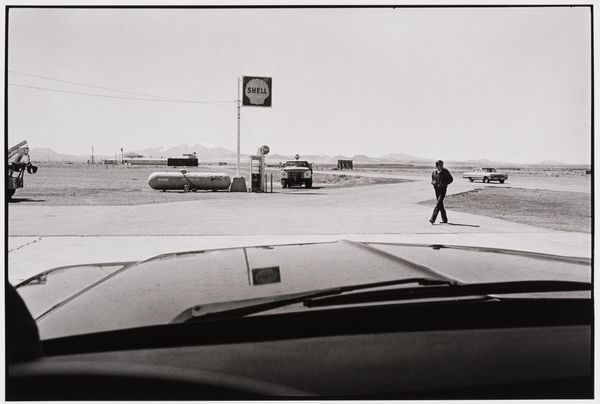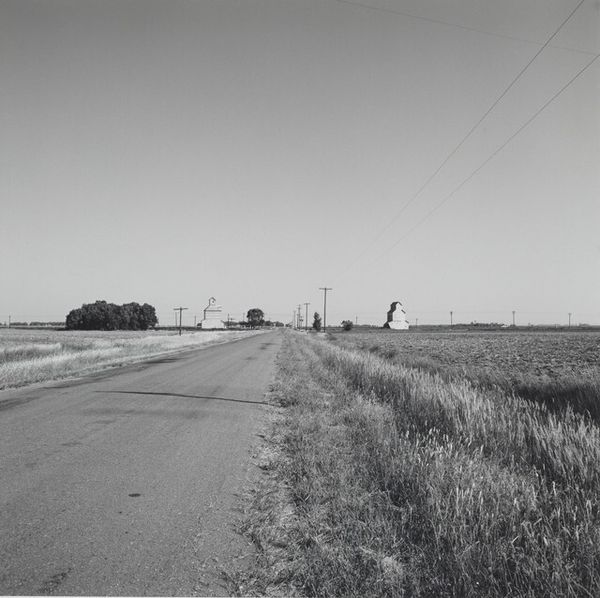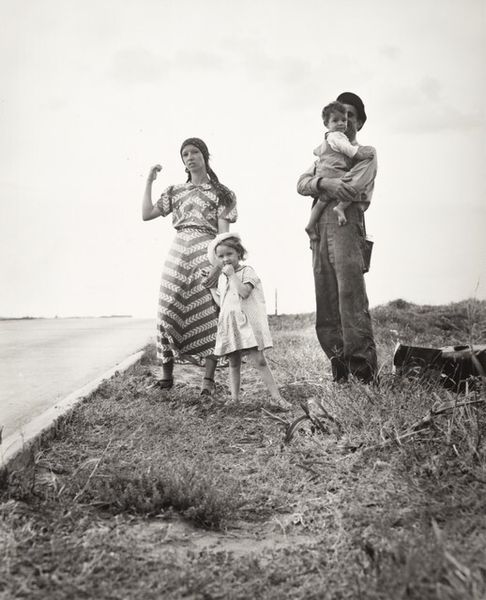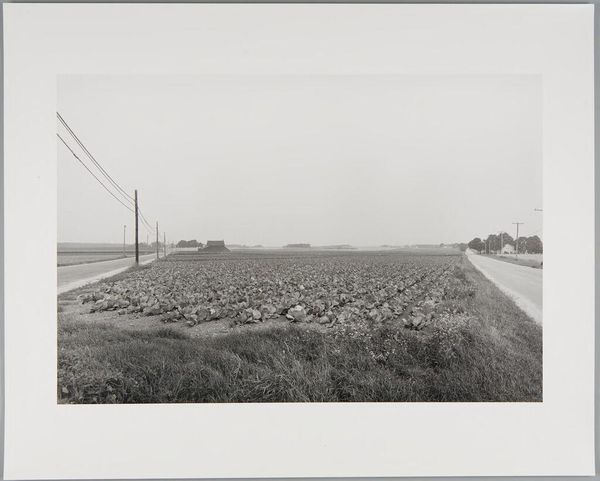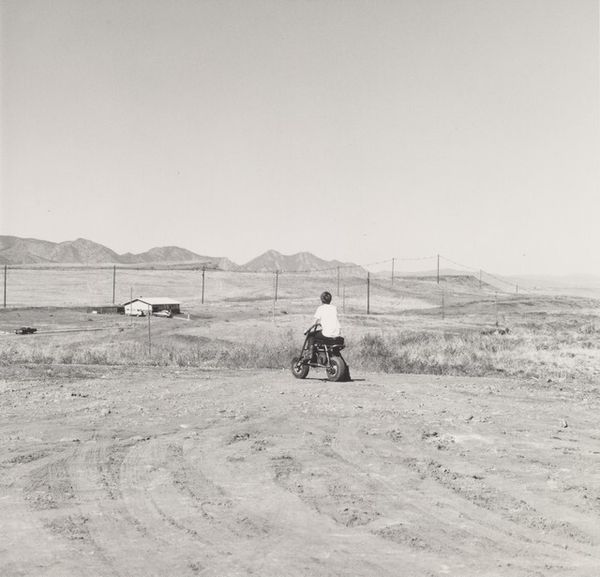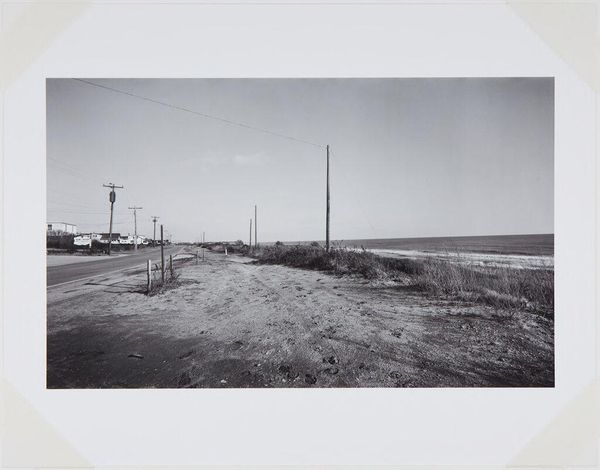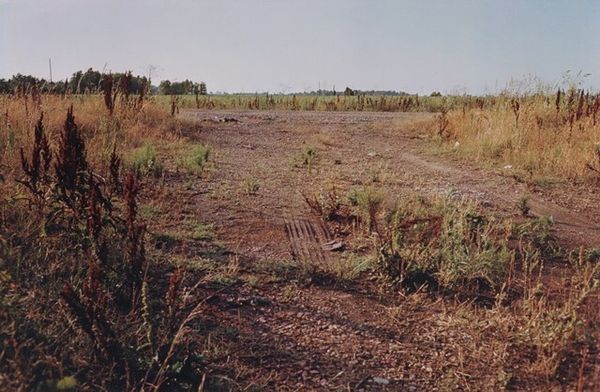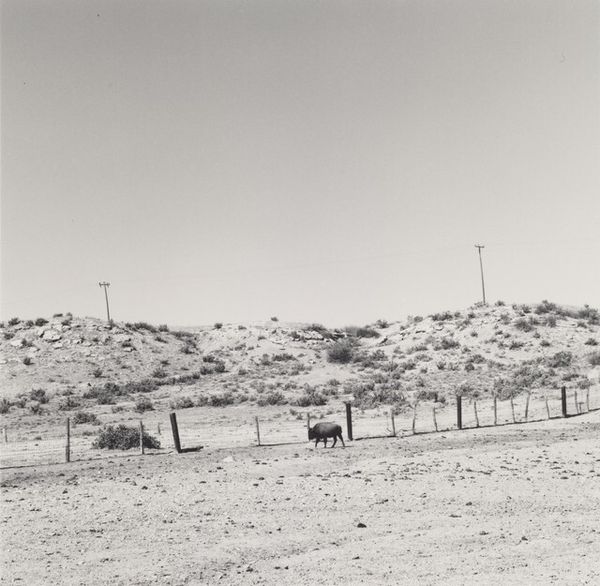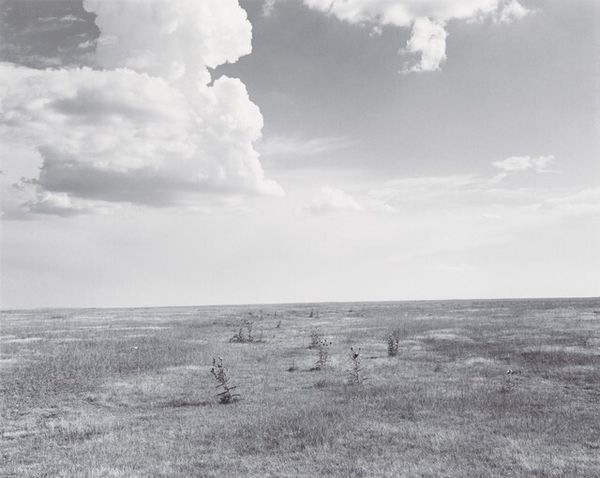
Copyright: William Eggleston,Fair Use
Curator: This is William Eggleston’s, "Near Minter City and Glendora, Mississippi," a C-print photograph taken in 1970. Editor: Stark! A lone figure stands on the shoulder of a highway, an anonymous woman dwarfed by the vastness. There's a distinct melancholy in the overcast sky. Curator: The dye-transfer process Eggleston championed really comes into play here. The ordinary asphalt becomes something vibrant and strangely compelling. He’s elevating the everyday through specific production processes. Editor: Exactly. I'm thinking about how this work challenges established photographic hierarchies of the time, moving away from purely documentary or overtly artistic purposes. Eggleston, in many ways, redefines how we view the South, and also how we think about public spaces and women. Curator: Definitely, the fact that this is a C-print is significant. We think about the role of mass production meeting artistic intention here. The snapshot aesthetic masks how controlled the photograph’s color palette is through specific labor practices in creating the dye-transfer print. Editor: It's interesting to consider the wider implications for how galleries embraced color photography. How was color photography accepted as art, not as "artifice", by a new audience? We can discuss the evolution of Southern identity at the time in American imagination by seeing it printed on the wall in large sizes. Curator: Also consider Eggleston's subjects, so often overlooked and seemingly inconsequential, suddenly become worthy of aesthetic attention. It challenges how photographic work elevates subjects by using material qualities like intense color, or through alternative mediums. Editor: So, it becomes an inquiry of not only whose stories we tell, but *how* those stories are framed through institutional recognition, gallery space and consumer reach. That transformation is exactly the point of such art; the mundane becomes elevated not merely in composition, but through its entire exhibition lifecycle. Curator: Agreed. Looking at this again, I’m struck by how something as simple as the medium changes the viewing of this image and encourages an active role in the artwork’s life and narrative. Editor: Yes. A photograph that quietly challenges conventional societal attitudes about art, the American South, and also challenges cultural institutions in that moment of artistic change.
Comments
No comments
Be the first to comment and join the conversation on the ultimate creative platform.
